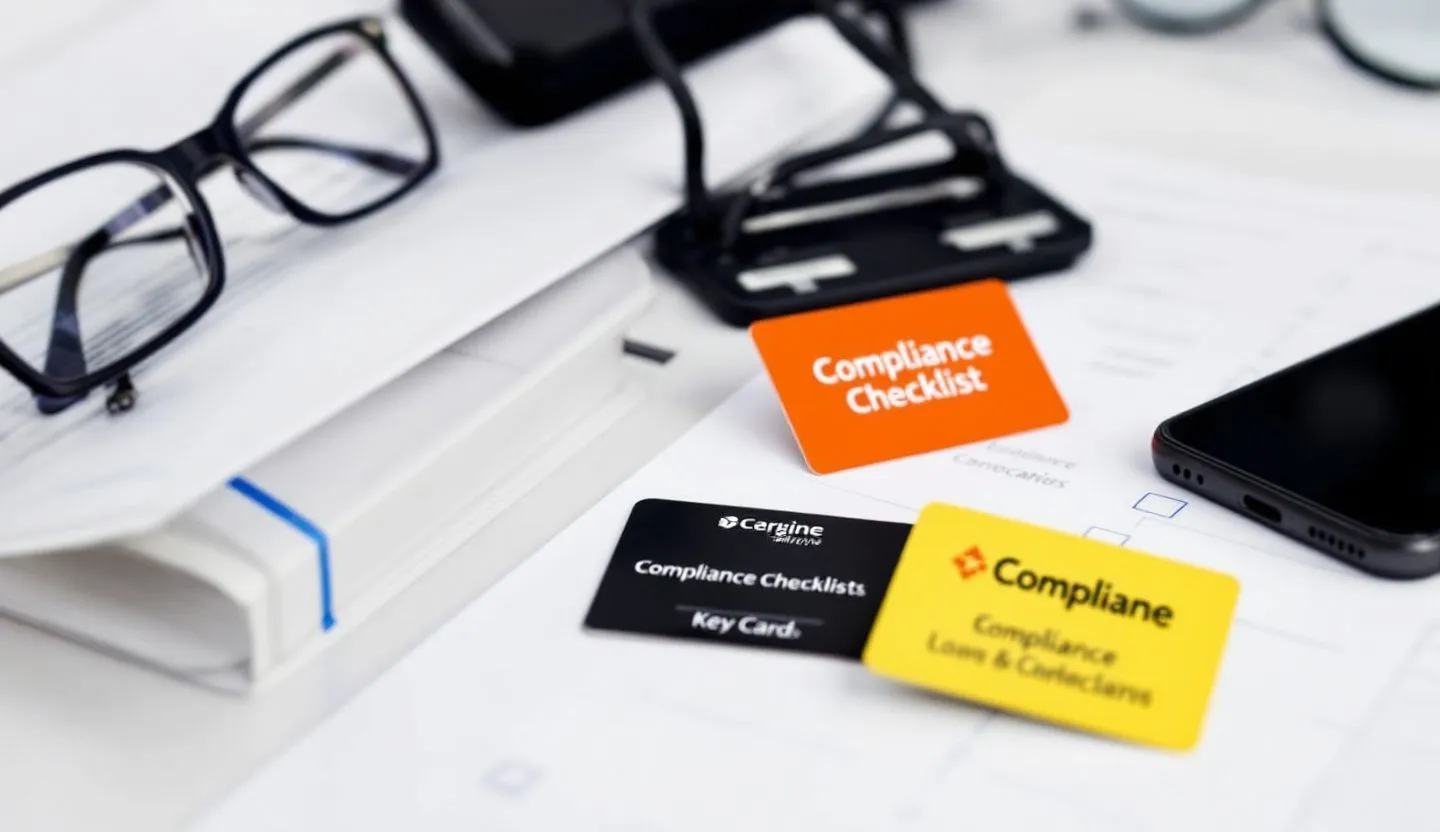Anyone who has ever tried to scale marketing in real estate knows the familiar tug-of-war between speed and control. You want to empower teams to act fast, but you also want to avoid regulatory landmines, brand missteps, and operational inefficiencies that can cost millions or, worse, reputational trust. It’s not just a legal headache, either. The pressure comes from every direction: local partners, compliance officers, IT, and your own brand team. And, of course, the clock is always ticking.
We’ve all felt that moment of dread: a new campaign is set to launch, but someone flags a missing disclosure. Or a regional office pushes a listing live with the wrong licensing info, and suddenly, you’re in damage control mode. These moments are more than just annoyances. They are risks that can impact your bottom line and your brand’s credibility. The old playbook, built on slow manual reviews and scattered documents, simply can’t keep up. In 2025, the stakes are higher, and so is the complexity.
Why the compliance landscape is shifting fast
The regulatory environment for real estate marketers is evolving at breakneck speed. Local, state, and federal rules are not just changing,they’re overlapping in ways that create gray areas and unexpected risks. Privacy laws like CCPA and GDPR are tightening, and now, more U.S. states are following suit with stricter consumer data protections. Meanwhile, AI-powered marketing tools are rewriting the definition of “content oversight,” sometimes creating compliance blind spots that only show up after the fact.
Take, for example, the latest requirements for digital disclosures. A friend of mine, a CMO at a national brokerage, recently shared how a listing template that was compliant last quarter was flagged during a routine audit. Why? The state had updated its requirements for agent license visibility and property data accuracy,mid-campaign. Multiply that by 50 states and hundreds of local ordinances, and you see why spreadsheets and static PDFs don’t cut it anymore.
And it’s not just the law. There’s mounting pressure from internal stakeholders. IT teams are asking hard questions about data security and integration. Legal is pushing for automated audit trails and version control. Your creative team wants more freedom, while partner managers need tools that flex to local nuances without risking brand consistency. The result? A complex ecosystem where compliance is no longer a box to check, but a living, breathing part of your go-to-market strategy.
The real cost of getting compliance wrong
Let’s get real about what’s at stake. In 2025, non-compliance is not just about fines or legal slapdowns. The bigger risk is erosion of trust,with clients, partners, and regulators. One high-profile compliance failure can trigger a domino effect: lost listings, terminated partnerships, negative press, and a wave of new internal controls that slow your team to a crawl.
I’ve seen brands lose deals because a local partner’s marketing collateral was missing required disclosures. I’ve seen entire campaigns pulled because an outdated privacy policy was buried in the footer. And with the rise of instant social sharing, even a minor slip can escalate quickly. As a marketing leader, you’re not just protecting the company; you’re safeguarding the trust that drives your growth.
The other hidden cost? Opportunity. When compliance checks slow down speed-to-market, your competitors move faster. When your creative teams are bogged down in manual review cycles, innovation stalls. And when IT and legal are firefighting, strategic projects get put on hold. The right real estate compliance software is not just about risk mitigation,it’s about unlocking velocity, creativity, and scale.
How real estate compliance software is changing the game
The good news is that 2025 is not just a year of new risks, but of new opportunities. Modern real estate compliance software has evolved from simple checklist tools into enterprise-grade platforms that integrate with your marketing stack, automate approvals, and adapt in real time to regulatory shifts.
Let’s break that down with a real-world example. A leading multi-state brokerage recently overhauled their compliance workflow. Instead of relying on email chains and manual sign-offs, they implemented a compliance platform that automatically flagged required disclosures, embedded local regulations into creative templates, and logged every change for audit readiness. The result? Their speed-to-market improved by 30%, and their legal team finally slept at night.
These platforms do more than automate busywork. They create a single source of truth, ensuring that every piece of content,whether it’s a listing, social ad, or branded video,is compliant by design, not by accident. They integrate with DAM systems, CRM platforms, and creative tools, reducing silos and manual errors. And, crucially, they provide the reporting and analytics that compliance, legal, and marketing all need to work together, rather than at odds.
The essential 2025 real estate compliance checklist
Mastering compliance in 2025 means more than just having the right software. It’s about building a culture, a process, and a technology stack that work together. Here’s what I’ve found to be essential for any enterprise team aiming to stay ahead, based on real pain and real progress.
Centralized compliance controls
The first step is consolidating compliance oversight into a centralized system. This is not about locking down creativity, but about empowering teams to move fast with guardrails. A centralized compliance dashboard gives legal, marketing, and IT a shared view of every asset, approval, and change. It eliminates the chaos of tracking down old versions or chasing email approvals.
For example, when a regional office wants to adapt a campaign for a local market, they can do so within the platform,ensuring the right disclosures are always present, and every edit is logged. This reduces back-and-forth, speeds up launches, and gives leadership confidence that nothing falls through the cracks.
Automated disclosure management
Keeping up with shifting disclosure requirements is one of the biggest headaches in real estate marketing. Automated disclosure management tools embedded in real estate compliance software can solve this. These tools dynamically update required language based on location, campaign type, and even property category.
Let’s say your team is launching a new series of social ads in Florida. The system automatically inserts the correct license numbers and state-mandated language, and flags any missing elements before the ad goes live. This not only saves time, but also ensures you’re never caught off guard by an audit or regulatory inquiry.
Role-based access and permissions
One of the most common compliance slip-ups happens when the wrong person has the wrong level of access. Role-based access ensures that only authorized users can make edits, approve assets, or publish content. This is especially crucial for large organizations with distributed teams and multiple partners.
Consider a scenario where a junior designer accidentally publishes a listing template without legal review. With robust role-based permissions, the platform prevents this by requiring approvals from compliance officers or legal counsel before anything goes live. This not only reduces risk, but also creates a clear audit trail for every action.
Integrated audit trails and reporting
Audit trails are your best friend when it comes to defending your compliance program. Modern real estate compliance software automatically logs every action,every edit, approval, and publication,creating a transparent record that can be pulled instantly for internal reviews or regulatory audits.
For example, if a regulator questions a campaign’s disclosures, your team can quickly generate a report showing who made each change, when, and why. This level of transparency not only speeds up audits, but also builds confidence with leadership and external partners.
The next-gen DAM for enterprise
Get more than just storage. Get the DAM that dramatically improves content velocity and brand compliance.Dynamic template management
Templates are both a blessing and a curse. They drive consistency, but they can also become outdated or misused. Dynamic template management tools ensure that every template in your library is always up to date, with the latest compliance requirements embedded.
Imagine your design team updates the company logo or your legal team changes a disclosure statement. With dynamic templates, every instance is updated across channels,no need to hunt down old files or rely on manual checks. This keeps your brand sharp and your compliance airtight.
Seamless integrations with creative and operational tools
Compliance should never be a bottleneck for creativity. The best real estate compliance software integrates directly with your creative tools,like Figma, Adobe, or Canva,as well as operational systems like CRM and DAM. This allows teams to work where they’re most comfortable, while compliance checks run quietly in the background.
For instance, your creative team can design a new flyer in Figma, and the compliance platform instantly flags missing disclosures or outdated branding. Your marketing ops team can pull assets from the DAM, knowing they’re always using the latest, compliant versions. This reduces friction and lets teams focus on what they do best.
Real-time regulatory updates
The only constant in real estate compliance is change. Your compliance software should be able to ingest real-time updates to local, state, and federal regulations, automatically adapting workflows and templates as needed. This is especially critical for enterprise organizations operating across multiple jurisdictions.
For example, if New York updates its requirements for digital property listings, your platform should automatically update templates and alert relevant teams,no manual intervention required. This not only saves time, but also prevents costly slip-ups.
Privacy and data security controls
With privacy laws tightening and consumer expectations rising, data security is now a core part of compliance. Enterprise-grade real estate compliance software should offer end-to-end encryption, secure user authentication, and granular control over who can access sensitive data.
This is not just about ticking a box for IT. It’s about ensuring that client data, property details, and internal documents are protected from breaches, leaks, and unauthorized access. In a world where one data mishap can make headlines, robust security is non-negotiable.
Scalable partner and vendor management
Many real estate enterprises rely on a network of local partners, agencies, and vendors. Managing compliance across this ecosystem can be daunting. The right software streamlines partner onboarding, enforces compliance standards, and provides real-time visibility into partner activity.
For instance, your partner manager can onboard a new local agency, assign them to specific campaigns, and set compliance requirements that must be met before any asset goes live. This reduces onboarding friction and ensures that every partner is operating within your compliance framework.
Training and enablement built in
Compliance is not just a technology challenge,it’s a people challenge. The best platforms bake training and enablement directly into the workflow, providing contextual guidance, checklists, and reminders as teams work.
Imagine a new team member joining mid-campaign. Instead of overwhelming them with static manuals, the software provides step-by-step guidance and in-app prompts, ensuring they follow best practices from day one. This creates a culture of compliance without slowing down productivity.
What this looks like in practice for enterprise teams
It’s one thing to talk about checklists and features. But what does mastering compliance actually look like day-to-day for a marketing leader or compliance officer?
Picture this: Your marketing team is rolling out a new campaign across 15 states, each with slightly different regulations. Instead of dozens of frantic Slack threads and last-minute legal reviews, every asset is created within the compliance platform. Disclosures are auto-populated based on state, partner logos are locked, and only pre-approved imagery is available for use. When the campaign goes live, you know every asset is compliant, on-brand, and audit-ready.
Meanwhile, your IT team is confident that every user is authenticated and every data point is encrypted. Legal has instant access to audit trails, and your operations leader can see, in real time, which partners have completed training and which need a nudge. The result? Fewer delays, fewer mistakes, and a lot less stress for everyone involved.
Overcoming common compliance obstacles
Even with the best tools, compliance challenges will pop up. From my experience, there are a few recurring pain points that enterprise teams need to be ready for.
- First: there’s the issue of change management. Rolling out new compliance software is not just about onboarding users,it’s about shifting mindsets. Some teams will resist, fearing it will stifle creativity or slow them down. The key is to involve stakeholders early, show quick wins, and provide ongoing support.
- Second: integrations can get tricky. Every organization’s tech stack is unique, and connecting new compliance tools with legacy systems can create friction. Partnering with vendors who offer robust APIs, white-glove onboarding, and responsive support makes a world of difference.
- Third: measuring ROI is critical. Compliance can feel like a cost center, but the right metrics,speed-to-market, reduction in compliance incidents, improved partner onboarding,can turn it into a growth driver. Sharing these wins with leadership is crucial for ongoing investment.
Why scalable compliance is the key to growth
In 2025, compliance is not a barrier to growth,it’s the foundation for it. When you can trust that every asset, campaign, and partner is operating within your compliance framework, you unlock new levels of scale and creativity. You can expand into new markets faster, onboard partners more efficiently, and launch campaigns with confidence.
More importantly, you build trust. With clients, regulators, and your own teams. That trust translates into stronger partnerships, more listings, and a brand that stands out in a crowded market. The right real estate compliance software is not just a defensive play,it’s your ticket to playing offense in a fast-moving industry.
Building a compliance culture that lasts
Technology is only as effective as the culture it supports. The most successful enterprise teams I’ve worked with embed compliance into their daily routines,not as a hurdle, but as a shared value. They celebrate compliant launches, share best practices across teams, and invest in continuous learning.
This culture shift doesn’t happen overnight, but it pays dividends. When compliance is seen as a driver of excellence, not just a box to check, teams become more proactive, more innovative, and more resilient. The right software supports this shift, making it easy for everyone to do the right thing, every time.
The future of real estate compliance is proactive, not reactive
Looking ahead, I see the role of compliance evolving from a back-office function to a strategic differentiator. With AI and automation, real estate compliance software will anticipate risks, suggest optimizations, and adapt in real time to regulatory changes. The most successful enterprise teams will be those who see compliance not as a burden, but as a source of competitive advantage.
Imagine a world where your platform not only flags risks, but recommends creative solutions, streamlines partner onboarding, and provides real-time analytics to inform strategy. That’s where we’re headed, and the teams that embrace this shift will be the ones who lead the industry in 2025 and beyond.
Mastering real estate compliance in 2025 is not about slowing down or adding more hurdles. It’s about enabling enterprise marketing teams to move faster, scale smarter, and protect the brand you’ve worked so hard to build. The real estate compliance software landscape has matured to the point where you can automate the busywork, integrate compliance into every workflow, and empower your teams to focus on what matters most: building relationships, launching campaigns, and driving growth.
The essential checklist,centralized controls, automated disclosures, role-based access, real-time regulatory updates, dynamic templates, secure integrations, and built-in training,is not just a roadmap for compliance, but for operational excellence. By embracing a proactive approach and investing in the right tools and culture, you can turn compliance from a pain point into a strategic asset. That’s how the most successful enterprise real estate brands will thrive in 2025: not just by avoiding risk, but by building trust, unlocking speed, and scaling with confidence.




